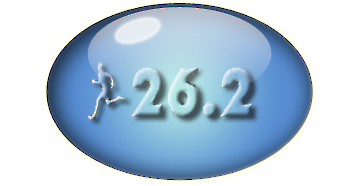
Base training is a crucial part of long-distance running, not just for marathon training. By creating a comprehensive training program that focuses on base training workouts, you can set yourself up for success. This method is more effective than other systems that emphasize long runs and speed work.
By gradually expanding and strengthening your base, your stamina, endurance, and speed will improve over time. When you transition to the “workout phase,” your body will be better equipped to handle the increased intensity, resulting in more effective speed workouts. Our system includes a 10-12 week base training phase followed by a workout phase that incorporates speed workouts and tempo runs. After the race, we will begin the next 3-month base training phase.
This approach is not just a theoretical concept; it is a proven method that has worked for runners of all levels, including elite athletes. By integrating this method into your training program, you are not only minimizing the likelihood of injuries throughout your running journey but also expediting your progress. This ultimate tool will allow you to unleash your full potential as a long-distance runner.
What is your base?
As you start running and continue doing so, your body undergoes a series of adaptations and changes. While most people tend to focus on their leg muscles, the changes that occur are not limited to them. Rather, several changes take place throughout your body. Although many of these changes might not be visible, they can significantly impact your running ability. For instance, elite runners have hearts that grow and strengthen to a point where they require minimal effort to deliver the necessary oxygen while resting. One essential aspect of running is base training, which involves building a solid aerobic foundation. Base training can be a game-changer, surpassing the benefits of speed workouts, tempo runs, and other intense routines. Increasing the number of miles you run triggers a transformative process in your body. This, in turn, leads to several changes that benefit your running ability. For instance, increased muscle mass can store more glycogen in your skeletal muscles. Additionally, increased mileage can expand your heart and lung capacity, thereby enhancing your oxygen processing ability. As you continue to increase your mileage, your body undergoes remarkable changes. For instance, it starts to generate more tiny blood vessels, which are crucial for efficient oxygen delivery. This, in turn, enhances your muscle performance and reduces fatigue. Running also stimulates the production of mitochondria, which are tiny power plants that fuel your muscles and keep them going. The more you run, the more mitochondria your body creates, augmenting your energy reserves that you can tap into.
THE NUMBER ONE SECRET OF RUNNING...
Running can help you build strength. However, if you run hard for extended periods, you can cause muscle damage and have a cumulative effect that may affect your future performance. The primary goal of running should be to build your muscles up, not just to strengthen them. The good news is that you can achieve this by running at an easy pace. However, many people think that running slow and easy is the same thing. In reality, an easy pace is the same as a sustainable pace. For shorter workouts, it means you can maintain a pace even after the workout is done. For longer runs, it means you can run at a pace until you start to run out of Glycogen. For example, if you can run for 90 minutes at a pace of 10 minutes per mile, your body will feel fatigued because you are running out of Glycogen. This is your sustainable pace for 30-75-minute easy runs (though you do not have to be precise). Throughout the season, it’s important to follow the 80/20 rule. This means that 80% of your workouts should be easy, and 20% should be hard, but this applies to all workouts during the week. For example, during a long run, the majority of the run should be easy, but the last few miles may be more strenuous as you start to run out of Glycogen. By consistently getting out and running at a sustainable pace, your body and mind will adapt and embrace the new workload.
The role of Base training
The goal is to take your existing base and add to it.
The key to improving your running performance is to build and expand upon your existing foundation. Many individuals with a solid running background assume they can jump directly into advanced workouts since they are already in good physical condition. However, for optimal results, it is recommended to cycle a build-up phase every three months rather than continuously mixing tempo, speed, and strength workouts with long runs. It’s important to understand that successful running involves creating and maintaining a solid foundation, even for elite runners. Engaging in hard workouts throughout the year is unnecessary, as doing so can be counterproductive. Instead, think of running as building a house – a strong foundation is essential. If you wish to add more rooms to the house, you must broaden the foundation. Many experienced runners make the mistake of continuously engaging in intense training and racing year-round, which can lead to stagnation, burnout, or injuries. To prevent this, it’s important to cycle through build-up phases and avoid overtraining.
How Base Training works
With every new training season, it is best to scale back and let the body recover, then start by adding more miles after a few weeks. How much depends on the new goals.
This can be done by adding more miles and/or more days to your training schedule.
Many experienced runners tend to focus on VO2 max, which is a measure of the maximum volume of oxygen that a person can consume during exercise. However, more than having a high VO2 max is required to perform well in long-distance running. Notable athletes like Apollo Ono and Lance Armstrong, who have some of the highest VO2 max readings, discovered the difficulty of running a marathon. While the volume of oxygen is essential, it is equally important to be able to absorb and process the oxygen in a state of semi-distress. This is where relaxation becomes crucial, which can only be achieved after a lot of practice. The next aspect of the equation is to be able to deliver oxygen to the areas where it is required. Running longer distances helps to expand the capillary system in the areas that are being used continuously. As a result, the cells, specifically the mitochondria within those cells, can access the increased levels of oxygen. The increased mileage also increases the density of mitochondria. Both of these occur in tandem, resulting in improved functionality at a higher level with a lower overall effort. This is the fundamental reason why it is not necessary to run hard all the time to see improvement. A more moderate effort has another side benefit. It takes massive amounts of energy for the body to maintain its body temperature when a severe workload has been placed on it. Sweating is an important way for the body to cool itself down. Long-distance runners with large capillary systems from high mileage do not have to work as hard to cool themselves down. This is because, in effect, their body acts similarly to a car radiator, where the moving air over the body helps cool the body; thus, less energy is used.
The Plan
This Base Training program is very simple. At the beginning of the season, the body and the mind need a recovery period from the workout session and hopefully the big race of the previous season. In the first few weeks, the mileage should be cut back well below the workout training sessions. Some will cut back as much as 50-75%. As the weeks go by more mileage is slowly added. Usually about 75% of the way into the Base training Session the mileage is back up the the previous Season. Before the workout session begins the target mileage should be anywhere from 10-30% higher than the previous season, depending on your capabilities and goals.
DO NOT SKIP BASE TRAINING AND GO STRAIGHT TO THE HARDER WORKOUTS. One may see some short term gains, but, with relation to the long term, one will never reach their true potential.
Due to infinite variables like weight, running experience, and overall athletic ability, there isn’t a one-size-fits-all type of workout. Novice and beginners should focus on TIME as opposed to DISTANCE in their runs. For example, in the early stages of training the short run may last for 30 minutes. For some, that may be a four-mile run, and for others, two miles. Distance doesn’t matter, time does. However, based on feedback, most people prefer distance charts. I have included both time and mileage charts.https://howtorunamarathon.net/base-training-charts-update/
Key to successful running
Add Mileage only to Base training Phase. Not the workout phase!
The key to successful running is to keep adding to your “running bank.” It is a simple concept. The more you can add to the bank, the more benefits you will see down the line. The next piece of the puzzle is when to add the mileage. By adding the mileage mainly in the Base training phase, the body will easily adapt to this new workload. This allows stronger hard sessions in the workout training phase.
Run Easy
It’s essential to keep in mind that you should avoid pushing yourself too much during this phase. For the most part, all runs should be at an easy pace. Following the 80/20 rule is a popular strategy for successful running systems, where 80% of the weekly mileage is at an easy pace. During the Buildup phase, this percentage can be increased to around 90%. If it takes more than 30 minutes to recover, then your run was likely too hard. Furthermore, it is suggested that your last mile should be faster than your first.
Check out the Magic Running Formula on how to determine if you are running too hard.
During the Build up phase, you can also see improvement by learning how to run more efficiently. I suggest going to the Running Efficiently Section. Many marathoners can improve their time by 5% or more through efficient running. This can easily take multiple minutes off your time
Run Smart Not hard!!!
Base Training Charts
For customized charts for every level of runner please follow this link to the BASE TRAINING CHART PAGE
